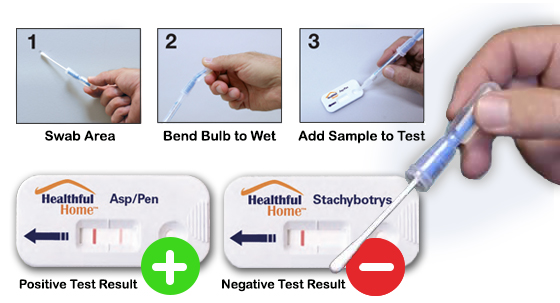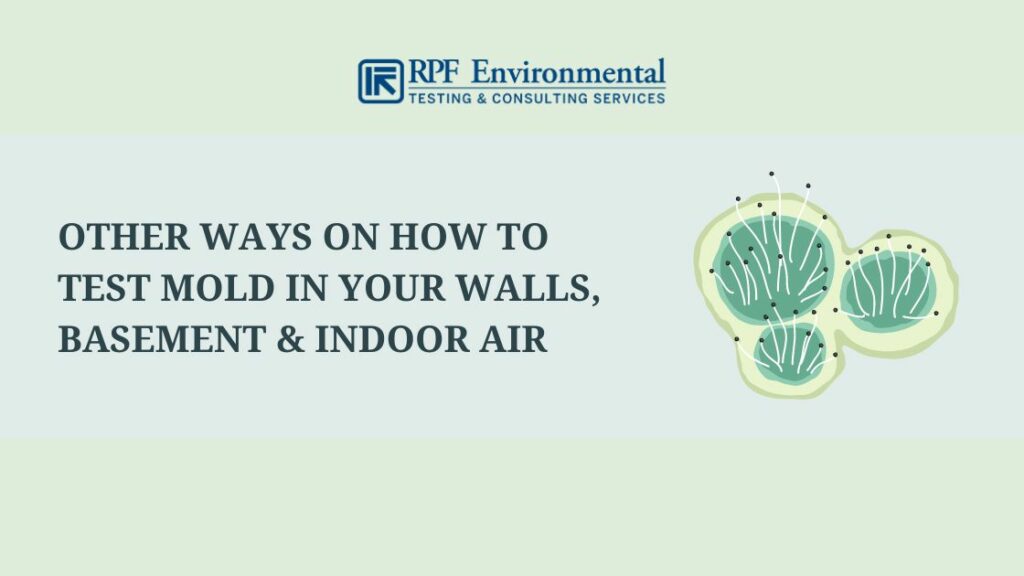Ensuring Conformity With Rules: the Function of Mycotoxin Testing in Top Quality Control
Making certain compliance with rigorous policies is critical for preserving food security, and the function of mycotoxin screening in high quality control can not be overstated. Mycotoxins, poisonous substances created by certain mold and mildews, position considerable wellness dangers, making their detection important in food manufacturing.
Understanding Mycotoxins
Understanding mycotoxins is basic to ensuring the top quality and safety of agricultural items. The most infamous mycotoxins consist of aflatoxins, fumonisins, ochratoxins, and trichothecenes, each linked with details environmental problems and fungal species.
The visibility of mycotoxins in food can bring about intense and persistent health and wellness problems, consisting of liver damage, immune reductions, and cancer causing results. Their detection and quantification are important parts of top quality control in agricultural and food industries. The complexity of mycotoxin contamination demands a diverse method, utilizing advanced analytical methods such as fluid chromatography, mass spectrometry, and enzyme-linked immunosorbent assays (ELISA) By comprehending the sources, types, and impacts of mycotoxins, stakeholders in the agricultural field can much better execute preventative procedures and alleviate risks, ensuring safer intake for end-users. This understanding forms the bedrock whereupon efficient mycotoxin administration techniques are constructed.
Governing Criteria for Mycotoxins
Having actually established a fundamental understanding of mycotoxins and their influence on food security, it is crucial to examine the regulatory criteria controling their existence in agricultural products. Regulatory requirements for mycotoxins are vital due to the fact that they define allowable restrictions, making sure food safety and security and safeguarding public health. Various international and nationwide firms have actually established these restrictions based on comprehensive danger analyses.
The Codex Alimentarius Commission, an international body established by the FAO and WHO, supplies guidelines and maximum allowable levels for different mycotoxins in food and feed. The Codex has set limits for aflatoxins in peanuts, maize, and dried out figs, amongst various other commodities. These standards are usually embraced or adjusted by specific countries to fit their specific needs.
In the European Union, Regulation (EC) No 1881/2006 states maximum degrees for several mycotoxins, such as aflatoxins, ochratoxin A, and deoxynivalenol, in different food products. Likewise, the U.S. Food and Medication Administration (FDA) has developed action degrees for mycotoxins like aflatoxins in assets such as nuts and grains.
Adherence to these regulatory standards is vital for preserving market access, consumer depend on, and public health and wellness. Non-compliance can lead to significant economic losses and wellness dangers, underscoring the significance of stringent mycotoxin screening protocols.
Evaluating Approaches and Technologies

ELISA is commonly valued for its rapid and economical screening abilities, making it suitable for high-throughput atmospheres. It relies upon antibodies to spot particular mycotoxins, providing cause a reasonably short time frame. Its level of sensitivity may be limited contrasted to more advanced methods.
HPLC, on the other hand, my latest blog post masters offering quantitative evaluation with high precision and accuracy. It separates intricate mixes right into specific components, making it extremely efficient for determining and measuring several mycotoxins simultaneously - Mycotoxin testing Services. This strategy, while extra time-consuming and resource-intensive than ELISA, supplies a higher degree of integrity

LC-MS stands for the pinnacle of analytical uniqueness and sensitivity. Integrating the splitting up power of fluid chromatography with the detection abilities of mass spectrometry, LC-MS can discover even trace degrees of mycotoxins. This technique is crucial for confirming the existence of mycotoxins in governing and forensic contexts, ensuring compliance with rigid security standards.
Carrying Out Checking Procedures

Integrating these sophisticated testing methods into an extensive top quality control framework necessitates a well-structured technique to carrying out testing procedures. To achieve this, companies have to initially conduct a complete risk assessment to determine potential mycotoxin contamination factors within the supply chain. This analysis notifies the development of a tailored testing approach that attends to specific susceptabilities.
Next, developing standard tasting procedures is crucial. Regular tasting ensures that test results are dependable and rep of the entire batch (Mycotoxin testing Services). Sticking to standards from regulative bodies, such as the FDA or EFSA, assists maintain compliance and boosts the credibility of the screening procedure
Educating workers is an additional essential component. Team must excel in both sample collection and the operation of testing devices. Normal training sessions and accreditation programs can ensure that employee remain upgraded with the most up to date techniques and governing modifications.
Benefits of Mycotoxin Checking
Mycotoxin screening provides various advantages that dramatically boost the safety and security and quality of food and feed products. Largely, it serves as a crucial control measure to avoid infected goods from getting to the consumer market, consequently protecting public health and wellness. By identifying and evaluating mycotoxins such as fumonisins, ochratoxins, and aflatoxins, producers can make sure that their Learn More Here products satisfy stringent regulatory criteria, hence staying clear of prospective legal repercussions and associated prices.
In addition, mycotoxin testing adds to the financial viability of food and feed sectors by minimizing the threat of large product remembers. The capacity to isolate and find infected sets early in the manufacturing procedure lowers waste and prevents the economic losses related to damaged brand online reputation. In addition, it promotes customer depend on and commitment, as consumers are progressively knowledgeable about food safety and security concerns and need higher high quality standards.
The execution of regular mycotoxin screening additionally advertises best techniques within farming and production sectors. By sticking to rigorous screening methods, firms can enhance their quality assurance procedures, improve functional performance, and make certain the constant manufacturing of secure, top notch products. Finally, the advantages of mycotoxin testing are multifaceted, adding to public health and wellness, economic security, and market integrity.
Verdict
Mycotoxin testing is crucial in making certain compliance with important source regulative criteria, therefore keeping food safety and security and top quality control. Therefore, mycotoxin testing continues to be an indispensable part of modern-day food security monitoring systems.
Making certain compliance with rigorous laws is paramount for preserving food safety, and the role of mycotoxin testing in high quality control can not be overstated.In the world of mycotoxin screening, progressed approaches and modern technologies are essential in making certain food safety and regulative compliance.Mycotoxin screening supplies numerous advantages that substantially boost the safety and quality of food and feed items.Mycotoxin testing is vital in guaranteeing compliance with regulatory requirements, consequently keeping food security and high quality control. Therefore, mycotoxin testing continues to be a crucial part of modern-day food security monitoring systems.